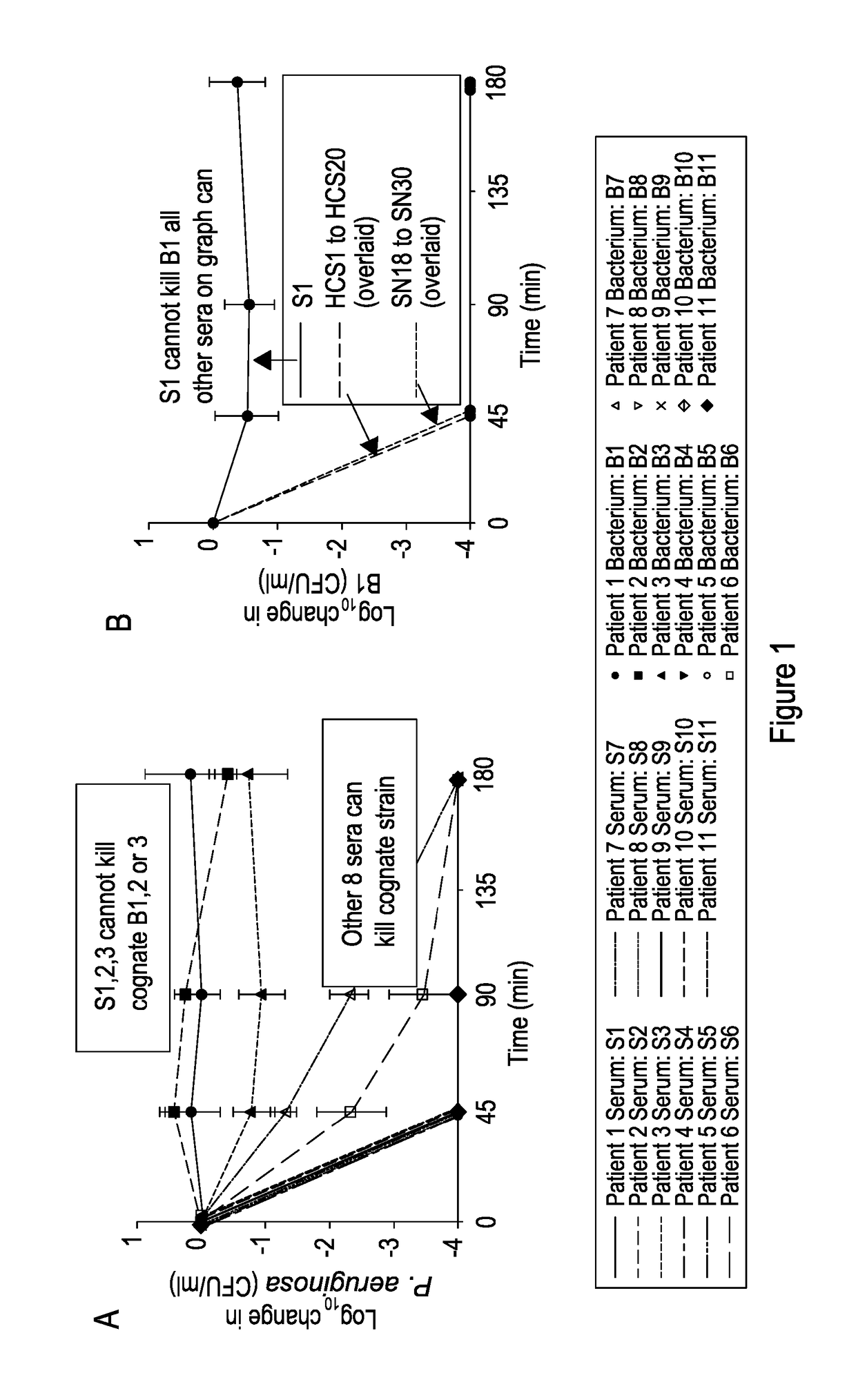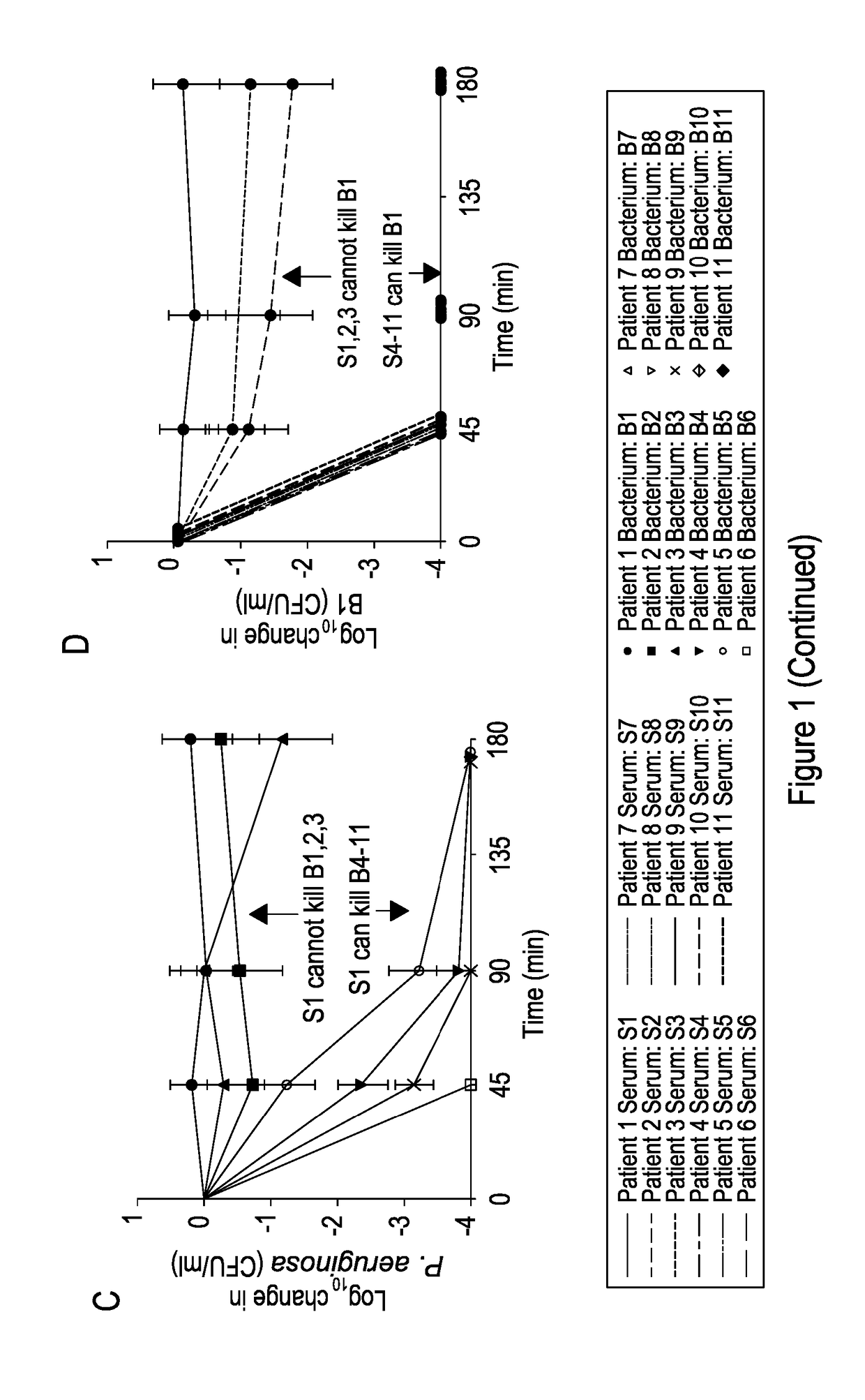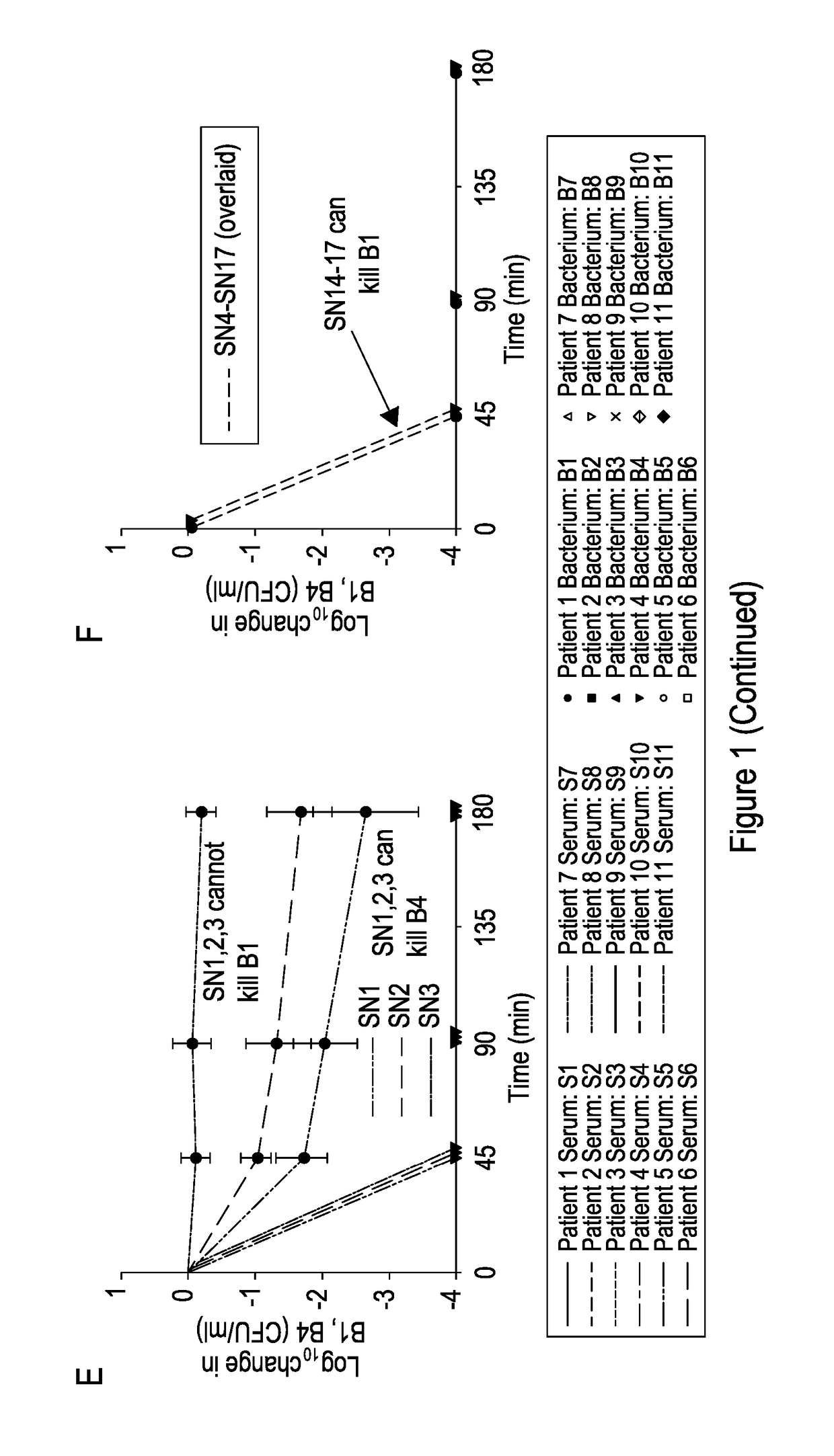Inhibitory immunoglobulins
a technology of immunoglobulins and immunoglobulins, applied in the field of immunoglobulins, can solve the problems of poor quality of life, difficult elimination, difficult management of conditions, etc., and achieve the effects of reducing time and cost, eliminating false positive results, and excellent specificity
- Summary
- Abstract
- Description
- Claims
- Application Information
AI Technical Summary
Benefits of technology
Problems solved by technology
Method used
Image
Examples
Embodiment Construction
[0054]The present invention will now be further described with reference to the following examples and figures which show:
[0055]FIG. 1 shows: Identification of patients with impaired serum killing. (A) Killing curves of P. aeruginosa strains isolated from bronchiectasis patients with their autologous serum at 45, 90, and 180 min. Negative values correspond with a decrease in viable P. aeruginosa compared with initial concentration. (B) Killing of B1 by sera taken from 20 healthy people at 45, 90, and 180 min. Killing of B1 by sera from patients with bronchiectasis but without P. aeruginosa colonization (SN18-SN30) is also shown. The curves depicting killing by HCS1-HCS20 and SN18-SN30 are overlaid to simplify. (C) Killing curves of all strains (B1-B11) by serum (S1). (D) Killing curves of P. aeruginosa strain B1 by patient serum (S1-S11). (E) Killing curves of B1 and B4 by sera SN1, 2, and 3 (SN1-3). (F) Killing curves of B1 and B4 by sera SN4-SN17. The curves depicting killing by S...
PUM
| Property | Measurement | Unit |
|---|---|---|
| temperature | aaaaa | aaaaa |
| temperature | aaaaa | aaaaa |
| temperature | aaaaa | aaaaa |
Abstract
Description
Claims
Application Information
 Login to View More
Login to View More - R&D
- Intellectual Property
- Life Sciences
- Materials
- Tech Scout
- Unparalleled Data Quality
- Higher Quality Content
- 60% Fewer Hallucinations
Browse by: Latest US Patents, China's latest patents, Technical Efficacy Thesaurus, Application Domain, Technology Topic, Popular Technical Reports.
© 2025 PatSnap. All rights reserved.Legal|Privacy policy|Modern Slavery Act Transparency Statement|Sitemap|About US| Contact US: help@patsnap.com



